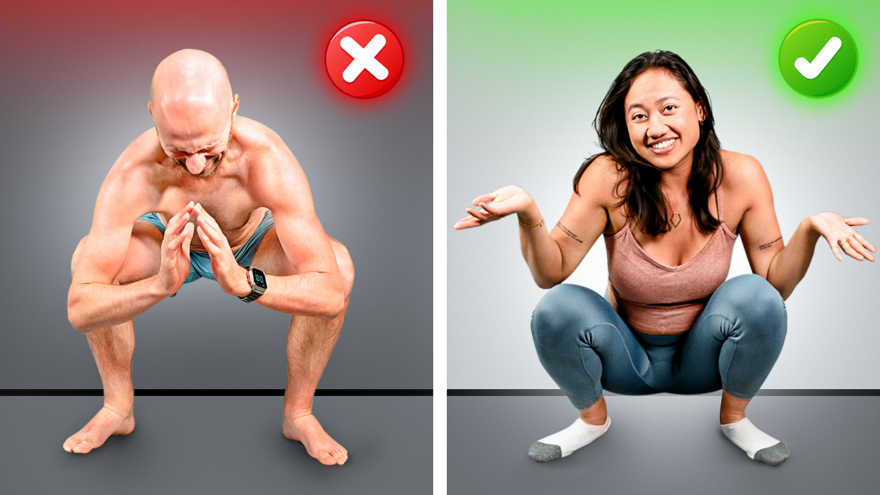Table of Contents
You’ll Squat Deeper Than Ever Before
Asian squats, or squatting deep, can offer a TON of health benefits, from improved mobility to better bowel movements.
But mastering this position can be challenging, especially if it’s not a common practice in your culture. People from countries where squatting is regular have changes in their ankle structure that make deep squatting easier. such as changes in their ankle structure.
Step 1: Relaxing the Back Muscles
This exercise helps relax the back muscles, a key step in achieving a deep squat.
- Lie on your back with your feet flat and arms at a 90-110º angle.
- Rotate your arms so that your palms are facing your head, and rest them on the floor.
- Inhale slowly through your nose for a 5-10 count, and as you exhale, reach your arms, flattening your back on the floor.
- Maintain this position for 5 sets of 5-10 breaths.
Step 2: Squat 101
This exercise mimics the squat position, preparing your body for a deeper squat.
- Stand about a foot away from a wall, with your feet apart.
- Bend your knees and let your upper pelvis rest against the wall.
- Look straight ahead with your arms bent up, as if holding a jacket over your shoulder.
- Inhale slowly through your nose, and as you exhale, use your feet to push your upper pelvis and lower back into the wall.
- Maintain this pressure for 5 sets of 5-10 breaths.
Step 3: Improve Hip External Rotation
This exercise focuses on improving external hip rotation. You need this motion if you want to squat deep.
- Lie on your side with your hip at a 60-degree angle, and your forearm flat on the floor.
- Make a letter “C” with your hand, and rotate your forearm down.
- Roll your entire body forward, keeping a straight line from your knee to your chest.
- Hold this position and breathe deeply for 30-60 seconds, for 4-5 sets.
Step 4: Squat Deep with This Trick
Want to squat deeper, but don’t have the ankle structure for it? Then it helps if you use ramps.
- Use ramps to shift your weight backward, which helps in squatting deeper.
- Start with a slight incline and slowly reduce the grade of the ramp over time.
Sum up
Practicing these exercises can help you improve your squat depth and reap the associated health benefits, even if you didn’t grow up in a culture where squatting is common. Remember to listen to your body and progress at a pace that feels comfortable for you.

